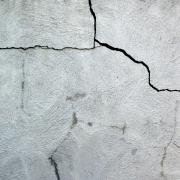What is Crack Injection?
Crack injection is a concrete repair method where a fluid resin, usually epoxy or polyurethane foam, is forced into a void in the foundation wall. The resin then cures, filling the crack and repairing the concrete.
The injection technique involves a series of injectable ports that are installed directly on or into the crack. Ports are spaced at intervals to ensure that all parts of the crack receive the resin.
What Is It?
Crack Injection is a method of repairing cracks in concrete foundation walls without having to remove the wall. It works best for non-structural leaking cracks that result from concrete shrinkage or minor settlement, but may also be used for structural cracked foundations.
The injection process involves injecting liquids into cracks using a caulking gun or dual-cartridge dispenser. Both epoxies and polyurethane foams have a range of viscosities, from ultra-thin to paste-like, to accommodate different crack widths.
For repairing non-structural leaking cracks, polyurethane is preferred. The material seals active leaks, stops moisture migration and protects the structure from water damage and decay.
Epoxy crack injection repairs can be performed on a wide variety of cracks, including those on slabs, columns, piers and walls. It is an affordable, low-pressure repair method and works effectively on most poured-in-place residential basements.
How Does It Work?
Crack Injection is a process that permanently seals foundation cracks. It is a two-component injection process using epoxy and polyurethane foams.
Epoxy and polyurethane are pumped through injection ports that are installed along the length of the foundation crack. These ports adhere to the wall over the crack with an anchoring epoxy paste and serve as a barrier to confine the injected epoxy within the foundation crack.
The epoxy or polyurethane will be injected through each port until it fills the entire width and depth of the crack. Then the lowest injection port is capped off and the next port injected to continue the process upwards.
The chemical mixture inserted into the crack will react and expand, filling the entire width and depth of the crack and preventing water from entering the crack. It should also provide more structural support to the concrete if the cracks are deep.
How Long Does It Last?
Crack Injection is a quick, inexpensive, and permanent repair for concrete foundation walls. It is an effective method for filling cracks 0.002 to 1 inch wide in basement walls, floors, and ceilings up to 12 inches thick.
The material is injected through surface-mounted injection ports glued to the concrete with epoxy. Typically, the port is placed 8 inches apart along the length of the crack.
To prevent leaks, the pressure of the compression spring on the dispensing tool should be slow, constant, and applied to each port while injecting. This reduces the likelihood of blow-outs and allows time for the material to fully penetrate the crack before moving to the next port.
The majority of crack injectors in this study prepared crack cocaine for injection using either lemon juice, ascorbic acid, or vinegar, and applying heat to the crack (but not heating the crack during the two events reported). Lastly, injectors “washed” their crack before injection with some form of soap and water, or converted their crack into a solution with alcohol.
Why Should I Inject?
Injection of epoxy or polyurethane foam can be used to repair leaking cracks and seal foundation leaks. This method is effective and permanent, and it doesn’t require any structural repairs.
It’s also much more reliable than other methods because it provides proof that the material is filling a crack completely and sealing it. This is the main reason it’s so popular among waterproofing contractors.
However, there are some downsides to injection products. First, they can be a hit-and-miss technique.
This is because they are blind – you can’t see the crack until it’s filled – and you may not know where to inject the polymer.
Secondly, they have varying viscosities, which make it difficult to guarantee the repair will be effective in all areas.
Finally, if the original injected polymer is leaking, you can’t re-inject it. This is because the water could actually create channels through the epoxy, causing leaks in the new repair.






